Calculating property damage payment for homeowners seems very necessary – on the surface. But there are several moving parts to consider before arriving at the final payment number. Exhibit 12.1 is an effort to walk through the property-loss-payment process of homeowners. Below are the completion instructions. The second flowchart page numbers the boxes, as mentioned below. The next few paragraphs explain the process of estimating policy property losses for homeowners, with a particular emphasis on HO-3 with HO 04 90 endorsements (Personal Property Replacement Cost).
These are the main factors required to complete this process. Maximum loss Housing and personal property amounts Insurance Limits Deductible Maximum Loss Amount How much would it cost to restore or replace damaged or lost home or personal property? No other steps can be taken without this knowledge. The "absolute damage number" is taken from the proof of loss form given by the insured carrier after a loss occurs – as detailed in Section I Conditions "Duties After Loss."

Once the insurance company issues the proof of loss form, the insured has 60 days to file the requested details. Note that the policy does not specify that proof is due 60 days from the loss; it is due 60 days from the carrier's appeal. The cumulative damage will surpass the policy limits. The policy limits in the flowchart are requested in block "1" for two reasons: 1) later in the process, it is essential to determine any coinsurance penalty that may apply to the dwelling (coverage "A") and 2) because the ultimate payout can not surpass the policy limits.
Do not lower the real "absolute loss number" as the insured would be penalized when the deductible is subtracted. Some articles of personal property policy of homeowners are subject to clear sub-limitations. It includes capital, securities, watercraft, trailers, and personal property used in business. Another property is limited by loss form. Jewelry and guns, for example, are restricted only if burglary causes damage.
Besides the list of personal property subject to sub-limits, there is a schedule of exempt personal property. Property insured elsewhere (such as floating on personal items), livestock, most "motor vehicles," aircraft and roomer, and border property are included in this excluded property list. A summary of the relevant homeowners' policy will include a comprehensive list of both limited personal and excluded personal property. Box "2" and box "3" in the flowchart refer to all groups. If the damaged property is subject to a sublime or excluded as discussed in box "2," the list of excluded or restricted value property is described in the box "3." Three pieces of information are needed to complete box "3": 1) a summary of the property, 2) the value of the property and 3) the amount of coverage allowed in the policy.
All damaged personal property is identified on the form. Replacement cost (or ACV, depending on the endorsements attached)

Defined property is mentioned in the second column, "Value." The sum of coverage given by the policy for that property class is mentioned in the third column as "Sum Accessible." If the "Value" is less than the "Amount Accessible," schedule the actual value.
This box can also list explicitly excluded personal property; however, "zero" or "$0" should be put in the "Sum Available" section. These amounts are used to develop the insurable "Amount of Personal Property Coverage" as detailed in box "4." If the personal property "total loss amount" does not include any restricted or excluded personal property, boxes "3" and "4" can be skipped. The entire amount of personal property loss can be moved to box "5."
Calculation of personal property coverage Available Full value of restricted and excluded personal property (detailed above) must be subtracted from the "absolute loss number" of personal property (listed in box "1"). The acceptable amount of coverage (as determined in box "3" by the insurance policy) is added back to the result. The result is the total "Amount of Personal Property Coverage" shown at the bottom of box "4." This total is moved to the "Personal Property" line contained in box "5" called "Real Insurable Loss." As specified in the box, this is the lesser of the "Total Loss Amount" or t.
Coinsurance Note that the only property subject to a coinsurance calculation is the homeowners' policy's real property. It is reasonable not to extend the coinsurance requirement to the personal property since the insured may not have the ability to pick the personal property cap. Coinsurance is given as a percentage of the home coverage.
To be insured entirely for partial real-estate losses, the insured must bear 80% of the gross insurable value (TIV) at the time of the loss. (This leaves a void, of course, if a loss reaches this limit.) Deciphering the insured's compliance with the coinsurance clause is done in boxes '6' and '7.' The basic coinsurance formula (ignoring the deductible) is: (Insurance Carried (IC)/Insurance Required (IR))) x Loss = Amount Eligible for Payment Insurance Required (IR) is determined by multiplying the TIV at the time. The standard homeowners' coinsurance requirement is 80%.

The formula for developing "IR" in the standard homeowners' policy is TIV x 80 percent = IR Insurance Required (IR) is calculated in box "6." If the dwelling policy cap, as set out in box "1," is greater than the IR, the coinsurance requirement is met, and no other calculation is required. Add the amount of residential damage to the amount of personal property damage described in box "Real Insurable Damage" (box "5") and position that number in box "Number Insurable Damage" (box "8").
However, if the policy cap is less than the measured IR, the coinsurance requirement has not been met and use box "7." This box applies the basic coinsurance formula mentioned above to the "coinsured" value. As detailed in the coinsurance series, the homeowners' policy does not extend coinsurance as a penalty. The sum developed for coinsurance is compared to the actual cash value (ACV) of the dwelling.

The insured gets the greater of these two prices. Essentially, the amount of coinsurance is the least the insured would ever get charged in a homeowners' policy, subject only to policy limits. When measuring coinsurance, the result is compared to the ACV of the dwelling. The greater of these two values is applied to the real insurable loss of the personal property, as shown in box "5." This number is put in box "8" titled "Absolute Amount of Insurable Loss." Deductibles are subtracted from gross insurable losses of property plans.
Some make a mistake in case of complete loss, subtract the deductible from the policy cap. Often, just one loss of deductible exists. No home deductible and personal property deductible. In the flowchart, to generate the "Value of Eligible Loss" (found in box "10"), the deductible (as stated in box "9") is subtracted from the "complete insurable harm."
Eligible Loss amount After applying the deductible to the "total amount of insurable injury," the "amount of eligible loss" is created and reported in box "10." This amount is compared to policy limits. If policy limits surpass this amount, the entire amount is billed.
However, if this number reaches policy limits, the greater the amount of coverage purchased (policy limits). Note the expression, "Remember to apply all available 'Additional Coverages' to this number" in box "10." Homeowners' policy provides multiple coverages in addition to purchased limits. Besides the "amount of qualifying loss," these sums must be added and charged.

|
How is homeowners insurance deductible calculated?
|
|
How do insurance companies determine home value?
|
|
How is replacement cost calculated?
|
|
What is replacement cost example?
|
|
What is Coverage A on a homeowners policy?
|
|
Is it better to have a $500 deductible or $1000?
|
|
What is the average homeowners deductible?
|
|
What does it mean when you have a $1000 deductible?
|
|
How do you negotiate homeowners insurance?
|
|
Why is replacement cost more than market value?
|
|
What does 100 replacement cost mean for insurance?
|
|
What is full replacement value?
|
|
What is the difference between market value and replacement cost?
|
|
What is a good price for homeowners insurance?
|
|
Why did my home insurance go up for no reason?
|
|
Why is my homeowners insurance quote so high?
|
|
Which is better ACV or replacement cost?
|
|
What is a replacement cost policy?
|
|
How do I know if I have replacement cost coverage?
|
|
Does insurance pay RCV or ACV?
|
|
Which is better ACV or RCV?
|
|
How do I know if I have RCV or ACV?
|
|
Is RCV better than ACV?
|
|
What does loss assessment cover?
|
|
What is the difference between guaranteed replacement cost and replacement cost?
|
|
What is the difference between guaranteed replacement cost and extended
replacement cost?
|
|
What is a replacement policy?
|
|
Is personal property replacement cost worth it?
|
|
What is a replacement life insurance policy?
|
|
What is a replacement transaction?
|
|
When must a producer provide a replacement notice on life insurance?
|
|
What happens if you switch life insurance companies?
|
|
What is the best way to define life insurance replacement?
|
|
When should I change my life insurance?
|
|
How do I get a deductible waived?
|
|
What is a good deductible?
|
|
What is a out of pocket maximum?
|
|
Is a $2500 deductible good home insurance?
|
|
What does it mean to have a $0 deductible?
|
|
Will I get my deductible back?
|
|
Which area is not protected by most homeowners insurance?
|
|
How do you calculate dwelling coverage?
|
|
What is the first step to consider when buying homeowners insurance?
|
|
What is the difference between out of pocket max and deductible?
|
|
How is maximum out of pocket calculated?
|
|
What happens when you meet your deductible and out of pocket?
|
|
What happens if you cant pay your deductible?
|
|
What if I change my deductible before filing a claim?
|
|
How can I lower my car insurance deductible?
|
|
Is a $3000 deductible high?
|
|
Is it better to have a copay or deductible?
|
|
What does 80% coinsurance mean?
|
|
Is it better to have a high or low deductible for home insurance?
|
|
Is a higher deductible better for home insurance?
|
|
What is AOP deductible?
|
|
What if damage is less than deductible?
|
|
What if I can't afford my health insurance deductible?
|
|
What is the deductible for roof replacement?
|

